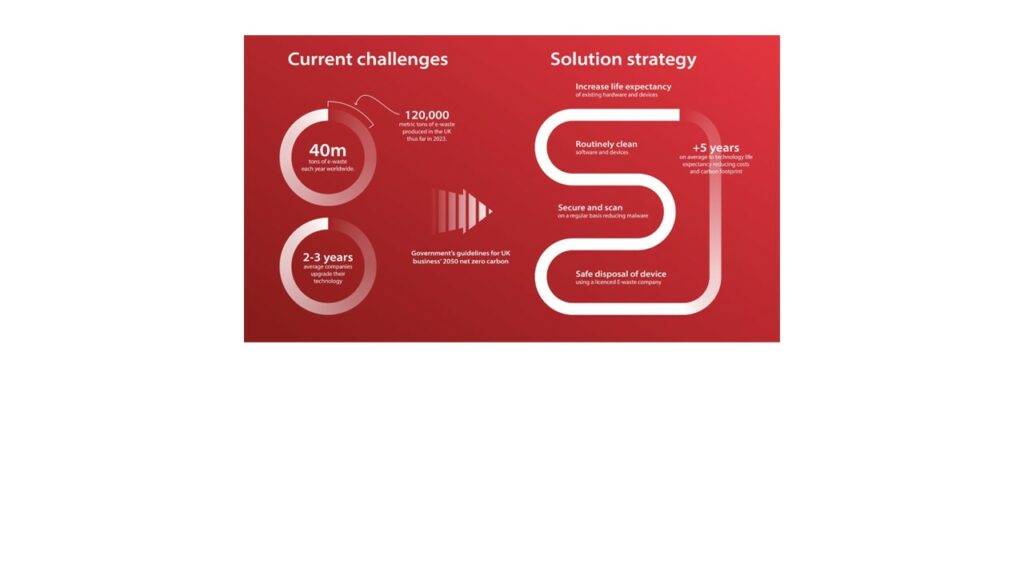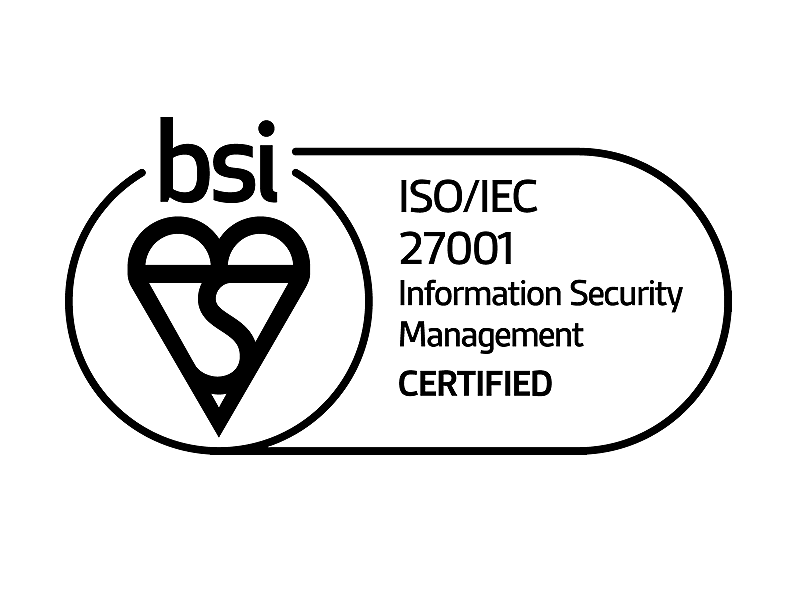With the pressure continuing to mount on UK businesses to decarbonise in line with the government’s 2050 net zero guidelines, companies are looking at innovative ways to reduce the impact that their business operations and services have on the climate, environment, and the planet.
Green initiatives that companies are adopting include smaller changes to operations such as reducing the amount of paperwork staff are printing, moving to digital business cards, installing recycling bins and switching to energy-efficient light bulbs in offices.
While larger programmes to reduce carbon footprints have seen organisations take more radicle steps such as switching to hybrid working models to help reduce carbon heavy commutes to the office or increasing uptake in the government’s electronic vehicle scheme. Some are investing in green energy solutions for offices from wind turbines and solar panels, while others are upgrading essential company hardware, such as networking devices, computers, laptops and printers, to more efficient models.
Upgrading computer hardware presents a great opportunity to help staff to work more efficiently and better manage workloads, and it also enables them to benefit from the latest advancements in software and technologies. However, with companies looking to upgrade hardware on average every 2-3 years, it raises concern about how much electronic waste, or E-waste, UK businesses are producing and the impact that this is having on the planet.
What is electronic, or E-waste?
Electronic waste includes any redundant electrical device that is no longer needed or used. Traditionally, in offices the obvious examples include old computers, laptops, printers and fax machines, but as technology has developed rapidly over the last decade, mobile phones and tablets are also increasingly on the list of redundant devices. Simply put, electronic waste includes anything with plugs, cords and electronic components.
While you may think these devices only contain circuit boards, plastics and glasses there are also a whole host of hazardous materials and gases used, firstly, to make them and, secondly, that are vital in their functionality. For instance, mobile phones include toxic materials such as mercury, lead, beryllium, and cadmium to name just a few, and touchscreens contain indium oxide and tin oxide, all of which are hazardous to humans and the planet.
How much electronic waste are UK businesses producing and where does it go?
It is estimated that 40 million tons of electronic waste is generated every year, worldwide. In total, including both households and businesses, the UK has produced almost 120,000 metric tons of e-waste thus far in 2023. This number is continuously growing and is why the UK is one of the biggest producers of E-waste in the world.
Traditionally this E-waste is either disposed of in landfill or exported, where it can be burned, polluting the atmosphere and surrounding the area, putting those that happen to live near to these sites at risk.
So, what are the solutions to helping businesses reduce electronic waste?
Luckily, there are several solutions available to help reduce E-waste.
Firstly, businesses should be acting to increase the life expectancy of existing hardware and devices. Making sure that they are routinely cleaned by removing redundant applications and software, and old and temporary files, will help to improve performance. As will ensuring devices are running the most recent updates and less applications simultaneously. Lastly, make sure you are regularly running scans on your devices to source, secure and remove unwanted malware, that can slow machines down.
Before throwing away devices and upgrading, businesses should also be looking to upgrade key elements of their existing hardware, for example upgrading a computer’s processor and memory, or even moving files to external devices, or the cloud, can also help to improve performance.
Inevitable, devices do age and will breakdown in time. Ensuring you have an extended warranty or service package in place will not only help you to resolve issues quickly when they do happen, but they also help in keeping devices operational for longer. Not only does this mean that you get the most use out of devices before you have to dispose of them, but it also pushes back the need to spend larger sums on purchasing new equipment more regularly.
However, even with the best service plans and warranties in place, ultimately machines do have a self-life, especially in today’s day-and-age where technology is advancing at a faster pace than ever.
When it comes to disposing of a device, the best and safest solution is to use a licenced E-waste company, such as Byteback.
These companies specialise in recycling and disposing hardware safely. They have processes in place to breakdown and recycle key components and many of them also look to clean, wipe, and refurbish hardware and export it to developing countries, where communities don’t have the resources in place to purchase expensive, new machines. By using a regulated E-waste company it also removes the added worry around data, with the industry having strong policies in place that minimise the risks of data breaches.
Here at Bom IT, we’ve partnered with Byteback. By spreading awareness of their work, we can work toward a carbon-neutral future within the IT industry. To learn more about Byteback and our services and warranty packages, email sales@bom.co.uk or call our #PeopleFirst sales team on 0800 038 7222.




